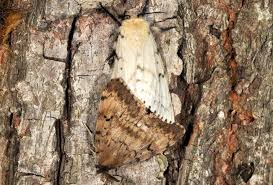The Indiana DNR has began treatment to try and slow the spread of spongy moth this week in Fulton, Marshall, Starke and Kosciusko Counties.
Along with the Indiana DNR, the divisions of Forestry and Entomology and Plant Pathology started the prevention during the week of June 19, conducting the treatments by flying yellow airplanes flying 75 to 125 feet above the treetops.
The team will soon be spreading a biodegradable, food-grade material with their female pheromone, to attract and confuse the male moths so that mating does not take place. People, animals, plants, and other insects are said to not be affected by treatments.
The spongy moth, also known as Lymantria dispar, and formerly known as gypsy moth, is known to be one of North America's most devastating invasive forest pests. The spongy moth is known to feed on the foliage of hundreds of species of trees and shrubs in North America but prefers oak trees.
Originally evolving in Europe and Asia, spongy moths have existed there for thousands of years. During the late 1860s, spongy moths were accidentally introduced near Boston, MA by an amateur entomologist. Since the accident, spongy moths have spread throughout the Northeast and now have went as far as the upper Midwest and Great Lakes states, including Indiana. Spongy moth can be an expensive, messy problem for homeowners and, when out of control, can cause extensive damage to U.S. forests. When spongy moth populations reach high levels, trees may be completely defoliated by feeding caterpillars. Several successive years of defoliation, along with contributions by other stress factors, often results in tree death.
information on the biology of the spongy moth, what homeowners can do to lessen the effects of the insect, and access to brochures on treatments.
For more information on the biology of the spongy moth, what homeowners can do to lessen the effects of the insect, and access to brochures on treatments visit the Purdue Entomology Spongy Moth Site at https://extension.entm.purdue.edu/publications/GM-5.pdf.
Photo of the spongy moth was provided by the Purdue Entomology Spongy Moth Site









